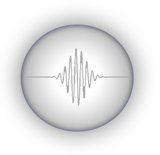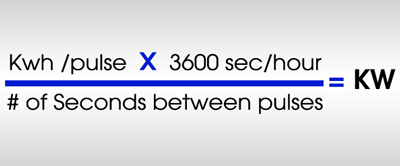How to Make Pulses Useful
May 2011
 |
In March, we examined what KYZ Pulses are. Now that we know what they are, let’s look into how you can use them to your advantage. Remember, Information is Power! We already touched on this topic last October… but as we all know repetition can be one of the best ways to fully understand a complex topic. |
Making a pulse usefulSounds like a daunting statement… but don’t worry we are here to help! Most pulse applications use basic Kwh Energy Pulses. There are two main uses for energy pulses:
Counting for consumption is great if you simply want to watch your energy use... but if you really want to take it to the next level, timing for Demand is the way to go! To truly understand why timing for demand is important, you need to first know what demand is. If you already know the basics, skip the link and keep reading below. Timing for demand essentially means tracking how much energy you consume in a given period of time. This allows you to:
This all sounds pretty appealing, so how do you actually time pulses for demand? Your answer lies within a Demand Monitor. Combined with a demand monitor the pulse becomes your secret weapon for Energy Knowledge. If used to its full potential, the monitor can help you become more energy efficient and reduce your electric costs. 
| |
 |
So now you’re probably thinking, “Ok what makes the demand monitor so special?” Well…
It basically does the all the hard work for you, so you can easily make decisions that directly effect your electric costs and energy efficiency. |
|
If you’re not quite ready to commit to the monitor, you can manually calculate demand with this equation: 
It will give you a rough estimate of your KW, but it’s not as accurate as a demand monitor. (Plus it's kind of tedious to sit and count pulses manually... as exciting as watching paint dry!) | |
Using Pulses for Cost Savings!In this economy we are all searching for ways to reduce our overhead. One of the biggest determinants for your electric costs are demand rates. There are two basic rates that most businesses fall under; Small General Service (SGS), and Medium General Service (MGS). SGS RateIf you fall under the SGS rate, knowing your demand can help you stay below the threshold. For several utilities this threshold is 25KW. For small businesses, staying below this threshold is extremely important in keeping electric costs low. MGS RateIf you are on the MGS rate your first objective is to get to the SGS rate. If this is unachievable, then your priority lies in finding ways to lower your demand in order to save money. Remember, you have around 3,000 average demand intervals in a month. That’s 3,000 chances to set your peak demand! Keeping your peak demand low will lead to lower demand charges, a lower demand rate, and will result in lower electric bills. Check with your local utility to see if moving to a lower demand rate is possible and if it can save you money. If costs aren’t your main concern, you can still use pulses to monitor your electric use and identify areas where you can become more energy efficient! | |
